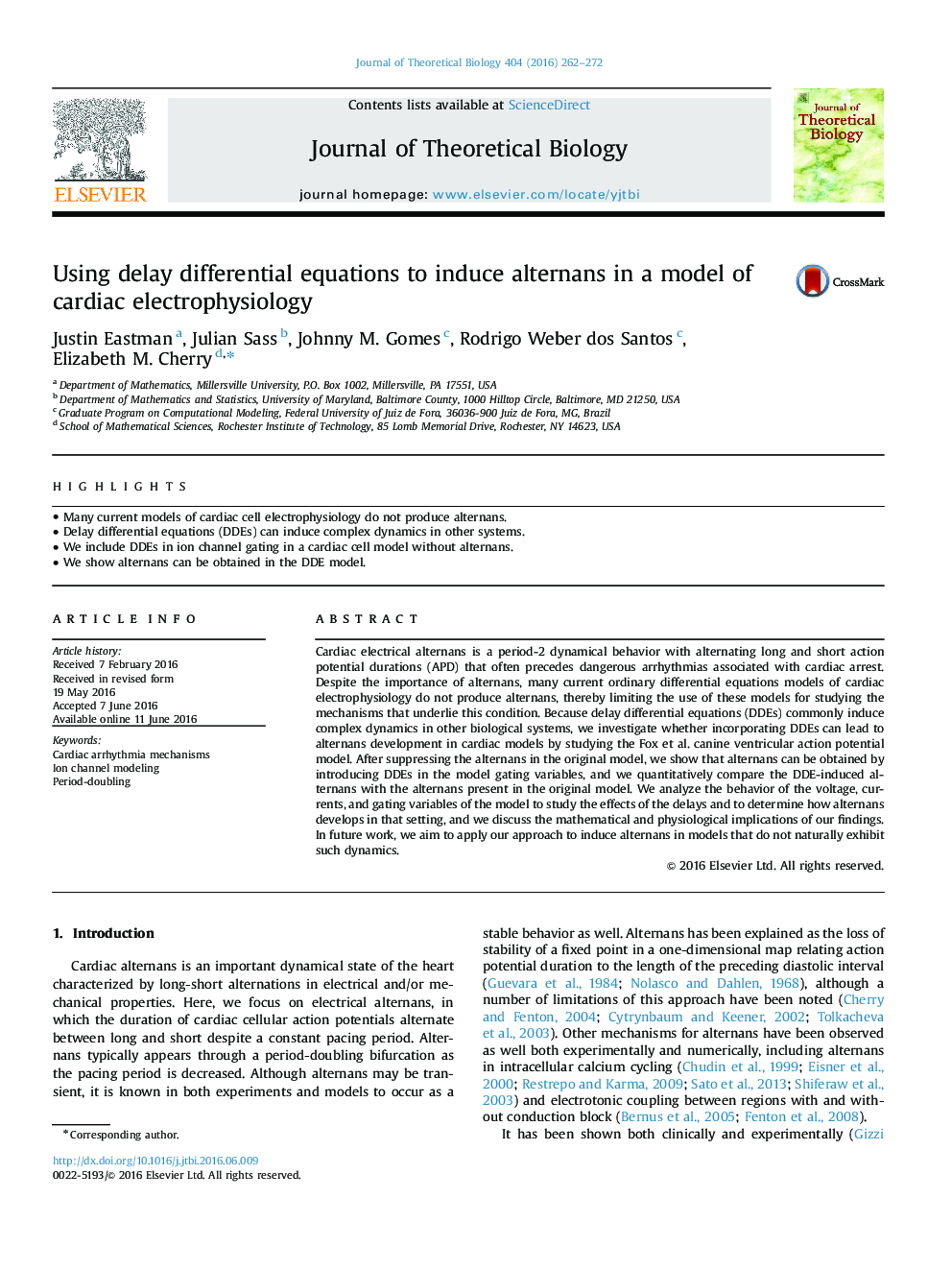| Article ID | Journal | Published Year | Pages | File Type |
|---|---|---|---|---|
| 6369042 | Journal of Theoretical Biology | 2016 | 11 Pages |
Abstract
Cardiac electrical alternans is a period-2 dynamical behavior with alternating long and short action potential durations (APD) that often precedes dangerous arrhythmias associated with cardiac arrest. Despite the importance of alternans, many current ordinary differential equations models of cardiac electrophysiology do not produce alternans, thereby limiting the use of these models for studying the mechanisms that underlie this condition. Because delay differential equations (DDEs) commonly induce complex dynamics in other biological systems, we investigate whether incorporating DDEs can lead to alternans development in cardiac models by studying the Fox et al. canine ventricular action potential model. After suppressing the alternans in the original model, we show that alternans can be obtained by introducing DDEs in the model gating variables, and we quantitatively compare the DDE-induced alternans with the alternans present in the original model. We analyze the behavior of the voltage, currents, and gating variables of the model to study the effects of the delays and to determine how alternans develops in that setting, and we discuss the mathematical and physiological implications of our findings. In future work, we aim to apply our approach to induce alternans in models that do not naturally exhibit such dynamics.
Keywords
Related Topics
Life Sciences
Agricultural and Biological Sciences
Agricultural and Biological Sciences (General)
Authors
Justin Eastman, Julian Sass, Johnny M. Gomes, Rodrigo Weber dos Santos, Elizabeth M. Cherry,
